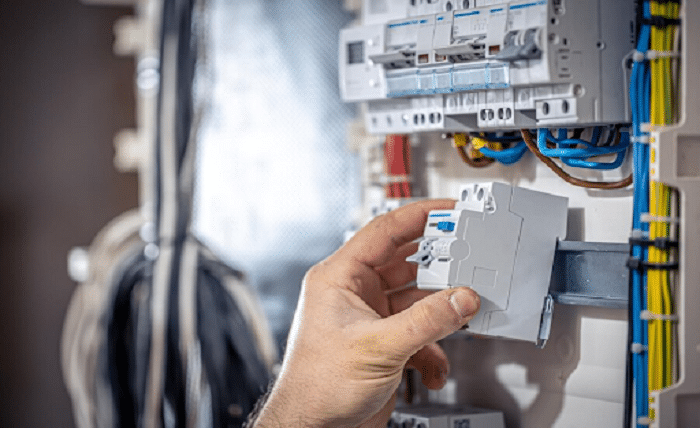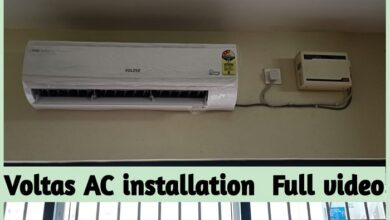The Importance of Proper Fuse Replacement in Electrical Safety

In our increasingly electrified world, electrical safety is paramount. One critical component of ensuring safety in electrical systems is the fuse. Fuses are designed to protect electrical circuits from overloads and short circuits, but they can only do their job effectively if they are replaced correctly. In this blog, we’ll explore the importance of proper ceramic fuse replacement, how to do it safely, and the broader implications for electrical safety in homes and businesses.
Understanding Fuses and Their Role
A fuse is a safety device that interrupts the flow of electricity in a circuit when the current exceeds a certain level. This excess current can occur due to overloads—when too many devices are drawing power simultaneously—or short circuits, where electrical current flows along an unintended path.
How Fuses Work
Fuses contain a metal wire or strip that melts when it heats up due to excessive current. Once the wire melts, it breaks the circuit, stopping the flow of electricity and preventing damage to the wiring and connected devices. This simple yet effective mechanism is a fundamental aspect of electrical safety.
Types of Fuses
Fuses come in various types, including:
- Cartridge Fuses: Commonly used in household and industrial applications.
- Glass Fuses: Often found in older appliances and electronics.
- Resettable Fuses: Also known as polyfuses, which can be reset after tripping.
Each type has its specific applications and characteristics, but the core function remains the same: to protect against electrical hazards.
Why Proper Fuse Replacement Matters
1. Preventing Electrical Fires
One of the most critical reasons for proper fuse replacement is to prevent electrical fires. When a fuse is blown, it indicates an underlying issue, such as an overload or a fault in the circuit. Replacing a fuse with one of the wrong amperage can lead to excessive current flow, risking overheating and potentially igniting a fire.
Key Points:
- Correct Amperage: Always replace a fuse with one that matches the amperage rating specified for that circuit.
- Investigate Causes: A blown fuse should prompt an inspection of the circuit to identify and address the underlying problem rather than merely replacing the fuse.
2. Protecting Electrical Equipment
Electrical devices and appliances are designed to operate within specific current limits. Using a fuse with the incorrect rating can expose these devices to harmful currents, leading to damage or failure.
Key Points:
- Device Longevity: Properly rated fuses help ensure that appliances and electronics function safely and last longer.
- Cost Savings: By protecting equipment from damage, you avoid costly repairs or replacements.
3. Ensuring Compliance with Electrical Codes
Many regions have specific electrical codes and regulations that dictate the proper use of fuses and circuit breakers. Ensuring compliance is not only a legal obligation but also a safety measure.
Key Points:
- Avoid Penalties: Non-compliance can lead to fines or penalties, especially in commercial settings.
- Insurance Implications: Improper electrical setups may affect your insurance coverage in the event of a claim related to an electrical fire or failure.
4. Enhancing Overall Safety
Proper fuse replacement contributes to the overall safety of your electrical system. This includes not just fuses, but also the wiring, devices, and the people who use them.
Key Points:
- Reducing Risks: Correct fuse replacement reduces the risk of shocks, fires, and other electrical hazards.
- Peace of Mind: Knowing that your electrical system is properly protected enhances your peace of mind.
How to Replace a Fuse Safely
Replacing a fuse may seem straightforward, but it’s essential to follow safety protocols to ensure it’s done correctly.
Step-by-Step Guide:
- Turn Off Power: Before attempting to replace a fuse, turn off the power to the circuit. This can usually be done at the main electrical panel.
- Identify the Problem: Determine why the fuse blew. Check for overloaded circuits or faulty appliances.
- Choose the Right Fuse: Select a replacement fuse that matches the amperage rating required for that circuit.
- Remove the Blown Fuse: Carefully unscrew or pull out the blown fuse. Be cautious of any signs of damage or discoloration in the fuse holder.
- Install the New Fuse: Insert the new fuse securely into the holder. Ensure that it fits snugly and is aligned correctly.
- Restore Power: Turn the power back on at the panel. Monitor the circuit for any unusual behavior.
- Test the Circuit: If applicable, use a multimeter to test the circuit after replacing the fuse. This helps confirm that everything is functioning properly.
Additional Safety Tips:
- Use Proper Tools: Always use insulated tools to avoid electrical shocks.
- Wear Protective Gear: Consider wearing gloves and safety glasses when working with electrical components.
- Seek Professional Help: If you’re unsure about the process, don’t hesitate to consult a qualified electrician.
Final Thoughts
The importance of proper fuse replacement cannot be overstated when it comes to electrical safety. Understanding the role of fuses, the implications of incorrect replacements, and following safety protocols are essential for safeguarding your home or business from electrical hazards. By prioritizing proper fuse management, you not only protect your devices but also enhance overall safety for yourself and those around you.
Investing time in understanding and maintaining your electrical system can yield significant long-term benefits, including peace of mind and a safer environment. Remember, when in doubt, it’s always best to consult a professional to ensure the integrity of your electrical setup.




